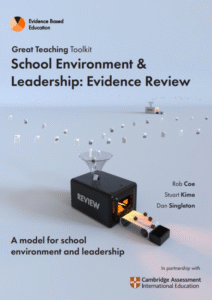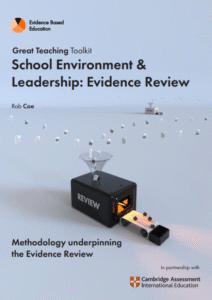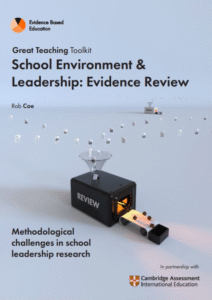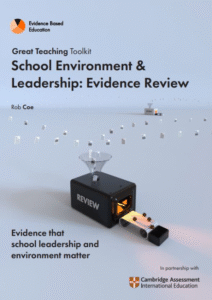
A Model for School Environment and Leadership:
This document draws on a comprehensive review of existing literature (112 studies) and identifies a set of school factors for which there is good evidence that they are related to student outcomes. These school-level factors are our current best bets for school leaders to pay attention to. It is intended to have a constructive, action focus and includes recommendations to school leaders on how to use the model.

Methodology underpinning the evidence review
This fourth document provides technical details of the literature search and synthesis process that underpins the other three. In this document you will find a set of research questions and search strategies, along with a list of 112 studies identified through the search and screening process.



